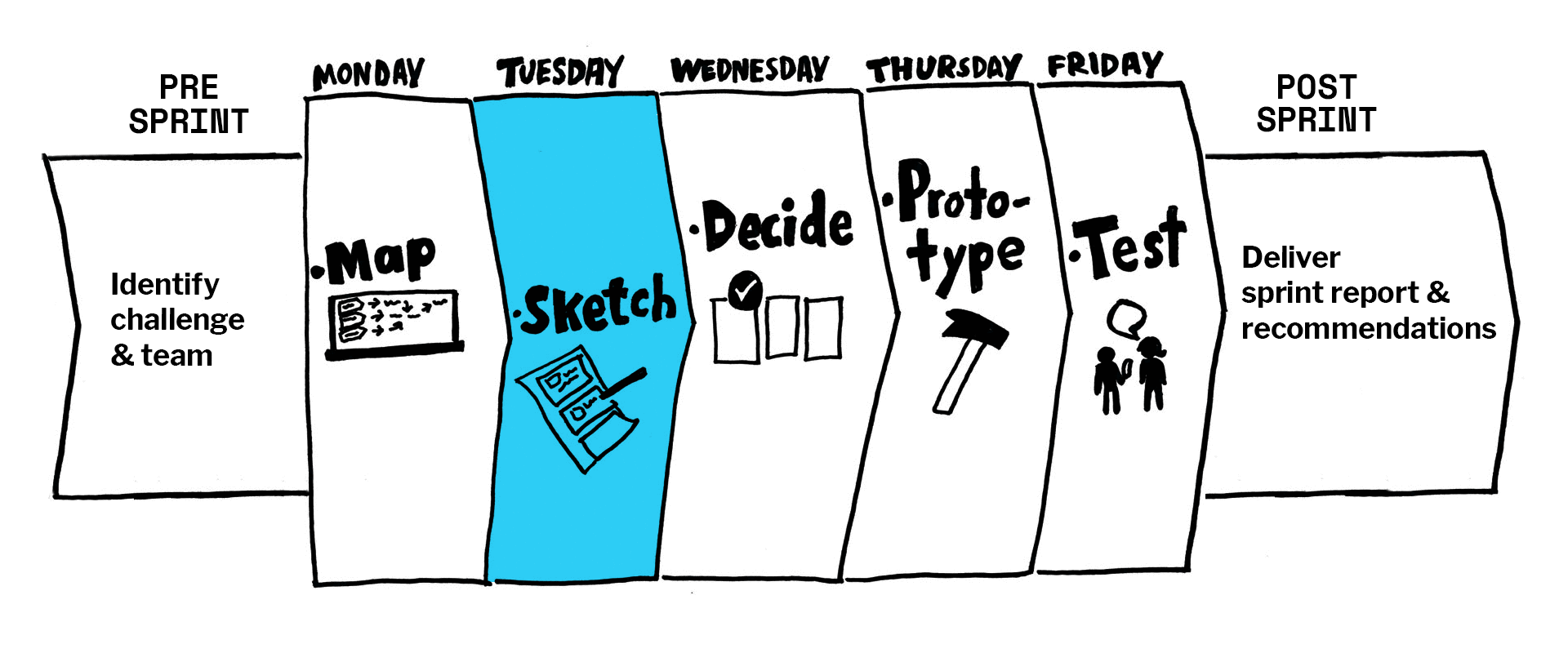
Sketching Design Sprint ideas
Day #2 Get creative and generate ideas*
We like to start every morning with a debrief so that everyone feels comfortable with what we’ve done and where we’re going. This is particularly useful if some people can only attend certain days of a Sprint (although not recommended, sometimes it can’t be avoided).
Once the debrief is over, and everyone has had their morning coffee, it’s time to get thinking. The group is asked to brainstorm and come up with solutions to the challenge. Any innovation process needs inspiration; we start by looking at potential solutions from different industries that we think are interesting and inspiring. Then we all share what we’ve found and put reference pictures on the wall as a reminder.

Different ideas are placed on the wall at the Noble Museum
Start sketching
When everybody has presented their thoughts (and an high-energy lunch has been consumed) it’s time to get creative: it’s time for everybody to sketch solution ideas based on the morning session. Once that’s complete, everyone is challenged to sketch eight more ideas, or rather eight variants of their favourite idea in just eight minutes. And with that we’re almost done with the tasks for the day. There’s just enough time for each person to choose one of their ideas from the day, develop it in line with the Sprint goal, and make an easily understandable sketch of their thoughts on a sheet of A3 paper. Then names are put to ideas, ideas are put on the wall, and it’s time to sign out for the day.
An external facilitator helps you keep an external perspective and guides you through explorative and creative methodology, while keeping the customer in focus.
*Much of this information can be found in “SPRINT – how to solve big problems and test new ideas in just five days”, by Jake Knapp and John Zeratsky, from Google Ventures. We’ve just tailored it to find a way that we think works best for our clients and delivers the best results for them.
